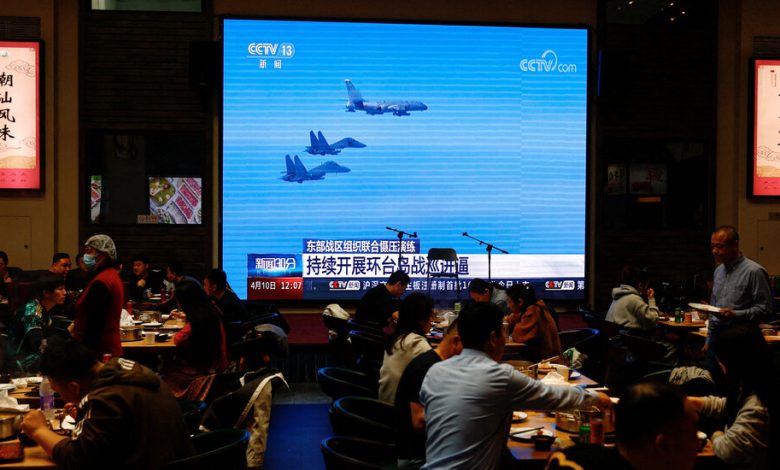China’s Military Is Making Risky Moves and Adding Nuclear Warheads, U.S. Says

The News
China’s military has been taking increasingly dangerous actions to deter U.S. forces in the Asia-Pacific region, including maneuvers to intimidate American aircraft, while also bolstering its nuclear capabilities, the Pentagon said in a report released on Thursday.
The United States has recorded more “coercive and risky” air intercepts by the Chinese military in the past two years than in the previous decade, the Defense Department said in its annual report to Congress on China’s military might.
At the same time, China is continuing to build up its strategic nuclear arsenal and had most likely amassed 500 nuclear warheads as of May, the Pentagon said, an increase of about 100 over last year’s estimate.

China has been stepping up military pressure on Taiwan, sending jets, drones, bombers and other planes near the island.Credit…Tingshu Wang/Reuters
Risky Maneuvers
Since the fall of 2021, the Pentagon report says, the United States has recorded more than 180 intercepts of U.S. aircraft by Chinese military forces in the region.
Beijing has long bristled at the U.S. military aircraft and ships that operate in international skies and seas near China.
China has been increasingly assertive in the region, from building military infrastructure in the disputed South China Sea to buzzing planes flown by the United States, Canada and other Western allies. Such moves risk a midair crash and a wider crisis.
Examples cited in the report and a separate press statement from the Pentagon earlier this week included a Chinese fighter jet that sped toward a U.S. military plane, dipped under its nose and later came as close as 10 feet underneath it; a Chinese plane that flew within 20 feet of the nose of a U.S. plane, which took evasive maneuvers to avoid a collision; and a Chinese fighter jet that fired eight flares while only 900 feet from a U.S. plane.
Beijing did not immediately comment on the Pentagon report. Chinese officials have previously depicted the air intercepts as reasonable responses to foreign military patrols that threatened the country’s security.
Taiwan
Like his predecessors, China’s leader, Xi Jinping, has said that he seeks a peaceful unification with Taiwan, but he has also said that he will not rule out the use of military force.
But over the past year, China has been pushing the boundaries of its military campaign to pressure Taiwan, sending jets, drones, bombers and other planes farther and in greater numbers to extend its presence around the island. It has warned that it could impose a blockade to choke off Taiwan.
The Pentagon’s report said that China’s decades of efforts to modernize its military had continued to “widen the capability gap compared to Taiwan’s military.” It also noted that in the event of a protracted war with Taiwan, China could try to end the conflict by escalating “cyberspace, space or nuclear activities.”
Nuclear Buildup
Mr. Xi has markedly accelerated the expansion of China’s nuclear arsenal, narrowing its big gap with the United States and Russia. Beijing does not disclose details about how many nuclear weapons it possesses, and the Pentagon’s annual report is one of the few international sources that gives detailed assessments of China’s expansion.
The Chinese military, the People’s Liberation Army, remains on track to have more than 1,000 nuclear warheads by 2030, the Pentagon estimates, most of them for missiles and other weapons capable of striking the continental United States.
The most eye-catching evidence of China’s nuclear buildup in recent years has been three clusters of missile silos that have been dug out of the deserts of northern China. The Pentagon report found that construction of the silos had been completed by last year and that “at least some” intercontinental ballistic missiles had been installed in them.



